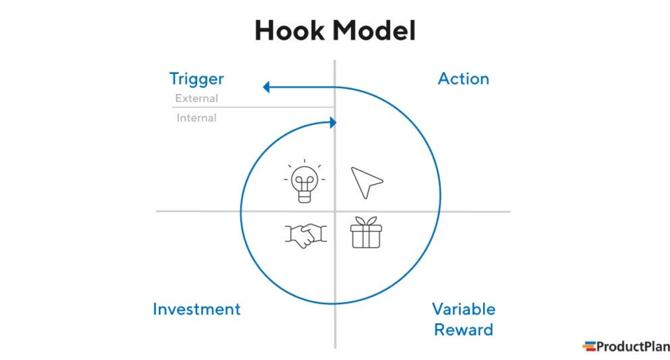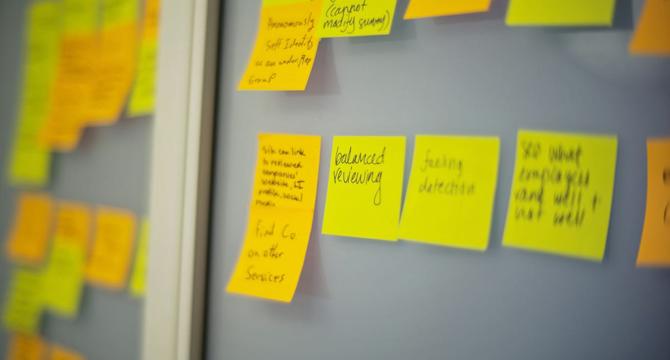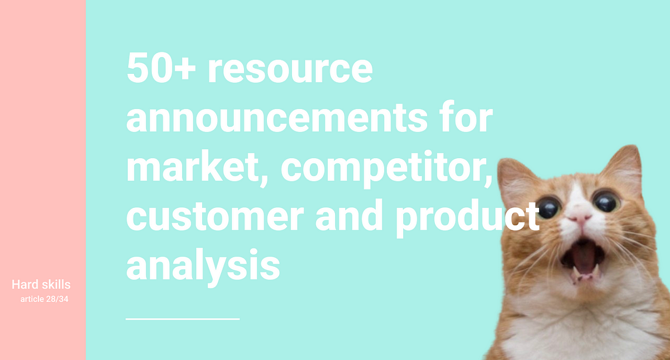Product Management News
Medium
62

Image Credit: Medium
Best SEO Writing App to Make Money Online with Affiliate Marketing (2025)
- SEO Writing AI is a tool that helps freelancers and affiliate marketers create high-quality, SEO-optimized content quickly and easily.
- With SEO Writing AI, users can generate long-form, SEO-friendly articles in seconds, saving time and effort in writing from scratch or hiring expensive writers.
- The tool offers customization options for language, tone, article length, and target audience to ensure personalized and engaging content that resonates with readers.
- SEO Writing AI's features, such as long-form articles, key takeaways, FAQs, and a table of contents, enhance the value of the content and improve its search engine ranking.
Read Full Article
3 Likes
Medium
137

Image Credit: Medium
Release Management for Dummies: An Introduction
- Release management is the process of planning, scheduling, and controlling software builds, deployment, and upgrades.
- A lack of structured release management can result in bugs making it all the way to production, compatibility issues or in the worst case, downtime or data inconsistencies.
- Good release management improves interaction between development teams, operations teams, and business, ensuring the alignment of all stakeholders.
- In the next article, we will delve into versioning and its importance in effectively managing releases!
Read Full Article
8 Likes
Medium
285
Image Credit: Medium
How I Accidentally Killed My UX Designer’s Creativity
- A senior team member unknowingly stifled creativity and limited collaboration in a project.
- They used a habit of sketching out rough UI layouts and functional diagrams to gather client requirements.
- The UX designer felt like an executor as the requirements seemed well-captured in the initial sketch.
- The process inadvertently hindered the designer's ability to add creativity to the project.
Read Full Article
17 Likes
Medium
283
Image Credit: Medium
AI Product Management: Walking the Tightrope Between Innovation and User Needs
- Users don’t care about AI, they care about getting things done faster, easier, and better.
- Implementing AI features without considering user needs can lead to low usage and no user value.
- The Balance Framework for AI features includes critical questions like value check, technical feasibility, and user readiness.
- The key to successful AI product management lies in solving real problems in ways that make sense to users.
Read Full Article
16 Likes
Discover more
- Programming News
- Software News
- Web Design
- Devops News
- Open Source News
- Databases
- Cloud News
- Operating Systems News
- Agile Methodology News
- Computer Engineering
- Startup News
- Cryptocurrency News
- Technology News
- Blockchain News
- Data Science News
- AR News
- Apple News
- Cyber Security News
- Leadership News
- Gaming News
- Automobiles News
Medium
388

Image Credit: Medium
How to Craft Web Apps That Satisfy Both Stakeholders and Users
- Balancing performance and client demands is crucial when building web applications.
- Finding equilibrium between performance and client expectations leads to successful products.
- A real-life project experience highlights the challenge of incorporating numerous features while maintaining performance.
- The excitement of building feature-packed web apps can be coupled with the challenge of keeping performance in check.
Read Full Article
23 Likes
Medium
62

Image Credit: Medium
Building Growth That Lasts: How We Built a Habit-Forming Property Marketplace
- In the early stage of a property marketplace, the goal was to increase supply of property listings.
- Instead of paying property owners to list their homes, the platform offered expertise and connected them with reliable agents who could assist in selling their properties.
- For property agents, a feature was built to provide direct access to property owners actively seeking help, eliminating the need for time-consuming manual canvassing.
- By focusing on habit formation and intrinsic motivation, the platform achieved sustainable growth without relying on cash incentives.
Read Full Article
3 Likes
Medium
90

Image Credit: Medium
How to Write Effective User Stories: A Guide for Business Analysts and Product Managers
- Many IT Business Analysts struggle with writing detailed user stories, leading to unclear requirements and misalignment between stakeholders.
- Writing well-structured user stories is a crucial skill that enhances collaboration between Business Analysts, Product Managers, and development teams.
- A user story is a concise description of a feature or functionality from the perspective of an end user.
- A well-written user story bridges business needs and technical implementation, focusing on clarity, completeness, and actionable details.
Read Full Article
5 Likes
Medium
126

Image Credit: Medium
AI and creative teams form a powerful partnership for delivering value
- AI can make tasks easier, faster, and cheaper, but it can't truly be creative.
- Human beings have the power of true innovation.
- AI in 2025 can produce music that echoes existing themes, but it can't generate entirely new paradigms.
- AI can be a tremendous help for humans in product management, but it can't create products that shift away from what is currently known.
Read Full Article
7 Likes
Medium
346

Image Credit: Medium
Over 50 free materials on how to analyze the market, competitors, customers and product
- Market analysis is crucial before product launch to understand competitors, customers, and trends for a successful launch.
- Tools like Google Trends, Statista, and SimilarWeb aid in market analysis by providing insights and data on trends and competitors.
- Segmenting the market based on specific groups and analyzing competitor data are vital steps in understanding customer needs.
- Utilizing reliable sources, official statistics, and reputable platforms is essential for accurate market research.
- Competitive analysis reveals strengths, weaknesses, and opportunities to differentiate your product and predict market actions.
- Understanding the audience's characteristics, preferences, and needs is key to developing a desirable product and effective marketing.
- Analyzing product strengths, weaknesses, and market fit helps in identifying areas for improvement and sustainable growth.
- Conducting SWOT analysis aids in strategically assessing product position and developing effective strategies.
- Choosing the right promotional channels based on target audience, budget, and brand consistency is essential for successful marketing.
- Assessing ROI, customer acquisition cost, and click-through rate helps in measuring advertising effectiveness.
Read Full Article
20 Likes
Medium
114

How to Manage Conflicting Stakeholders’ Viewpoints in the Same Product Backlog
- Managing a product backlog involves balancing external stakeholders' needs, market forces, and internal stakeholders' priorities.
- To address conflicting customer needs, product managers can use a feature prioritization matrix to weigh customer demand against strategic fit.
- To respond effectively to competitor moves, product managers should stay adaptable and proactively track industry trends.
- Balancing technical debt with customer demands is crucial for maintaining code quality and infrastructure stability.
Read Full Article
6 Likes
Medium
6.4k

Image Credit: Medium
The New-Age Product Manager: How Cursor AI Levels the Playing Field
- Cursor AI is an AI-powered coding assistant designed for developers, analysts, and technical professionals.
- It helps professionals like Product Managers navigate, understand, and optimize code without being full-time developers.
- Cursor AI enhances the workflow of PMs by providing coding assistance, aiding in product documentation, and enabling data-driven decision-making.
- It bridges the gap between strategy and execution, making it an indispensable tool for both developers and Product Managers.
Read Full Article
32 Likes
Medium
43

Image Credit: Medium
⏳ Chronoception
- Chronoception is our cognitive recognition and understanding of the passage of time.
- Understanding chronoception can help products create better and more engaging experiences for users.
- Platforms like ClickUp, Headspace, Uber, Zomato, and Google Maps leverage chronoception in their products.
- Chronoception can be used to minimize perceived loading/wait times, manage schedules, and provide real-time updates.
Read Full Article
2 Likes
Medium
205

Image Credit: Medium
Hyperbolic Discounting
- There is an inherent bias towards immediacy where if users were to choose from a selection of rewards that occur at different points in time then the perceived value of those rewards that come with a delay goes down.
- Examples of apps/products leveraging hyperbolic discounting: Zomato's 50% off Flash Sale, Amazon's flash sales and limited-time deals, bonuses in games like Candy Crush Saga, and gems in Duolingo.
- Hyperbolic discounting can help products encourage users to make quicker decisions favoring immediate benefits.
- The bias towards immediacy can drive traction and transactions in various apps.
Read Full Article
12 Likes
Medium
347

Image Credit: Medium
IKEA Effect
- Greater user engagement, satisfaction, and ownership of the product can be achieved by leveraging the IKEA Effect.
- Users are willing to pay a higher value for products they have contributed to creating.
- Loyalty and stickiness to the brand can be increased through user involvement.
- Examples of the IKEA Effect in action include sneaker customization, Bitmoji avatars, and Minecraft's user-created virtual worlds.
Read Full Article
20 Likes
Medium
276

Next.js Image Optimization: Everything You Need to Know
- Next.js Image Optimization provides automatic resizing, lazy loading, WebP format conversion, and CDN caching to improve website speed and SEO.
- The next/image component in Next.js comes with built-in optimizations, while using a traditional
tag requires manual optimization.
- Basic usage of next/image involves importing it and specifying the image source, alt text, width, and height.
- Next.js image optimization features include automatic lazy loading, responsive images, WebP conversion, and support for loading remote images.
Read Full Article
16 Likes
For uninterrupted reading, download the app